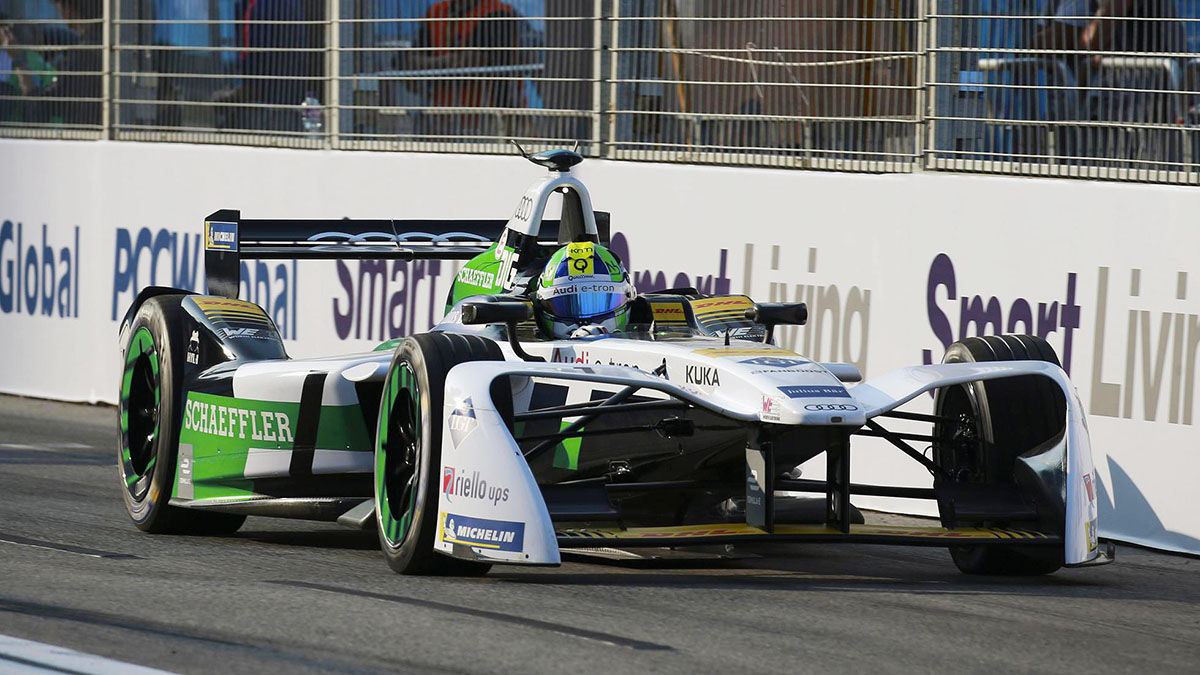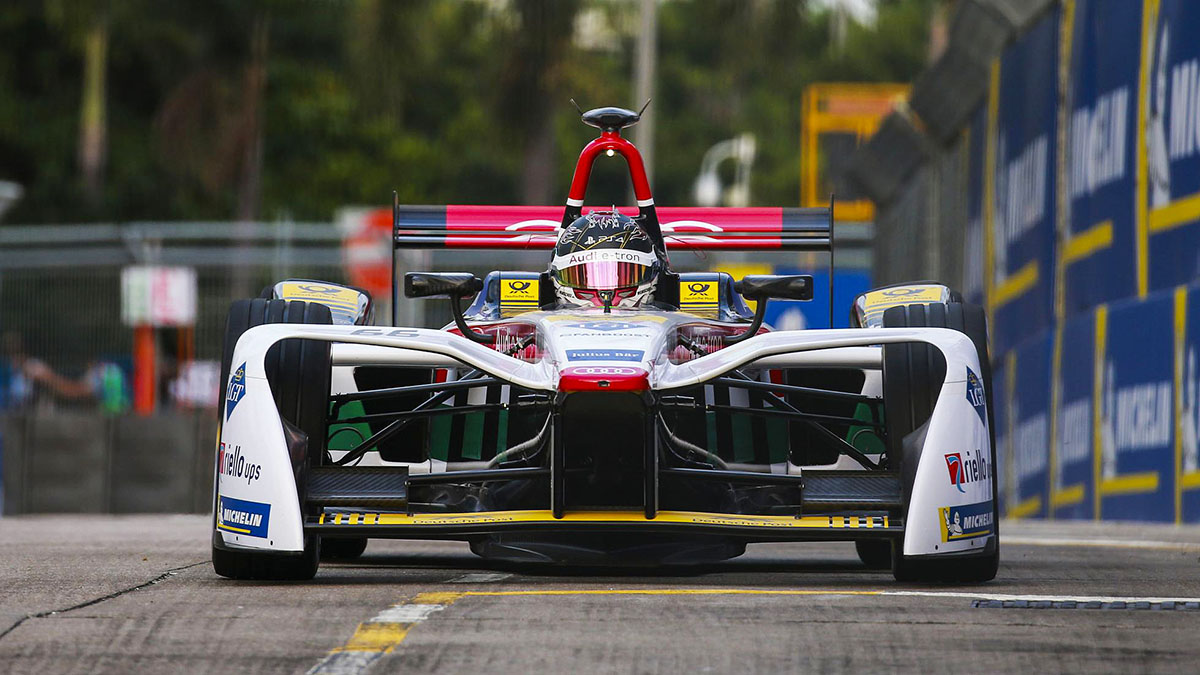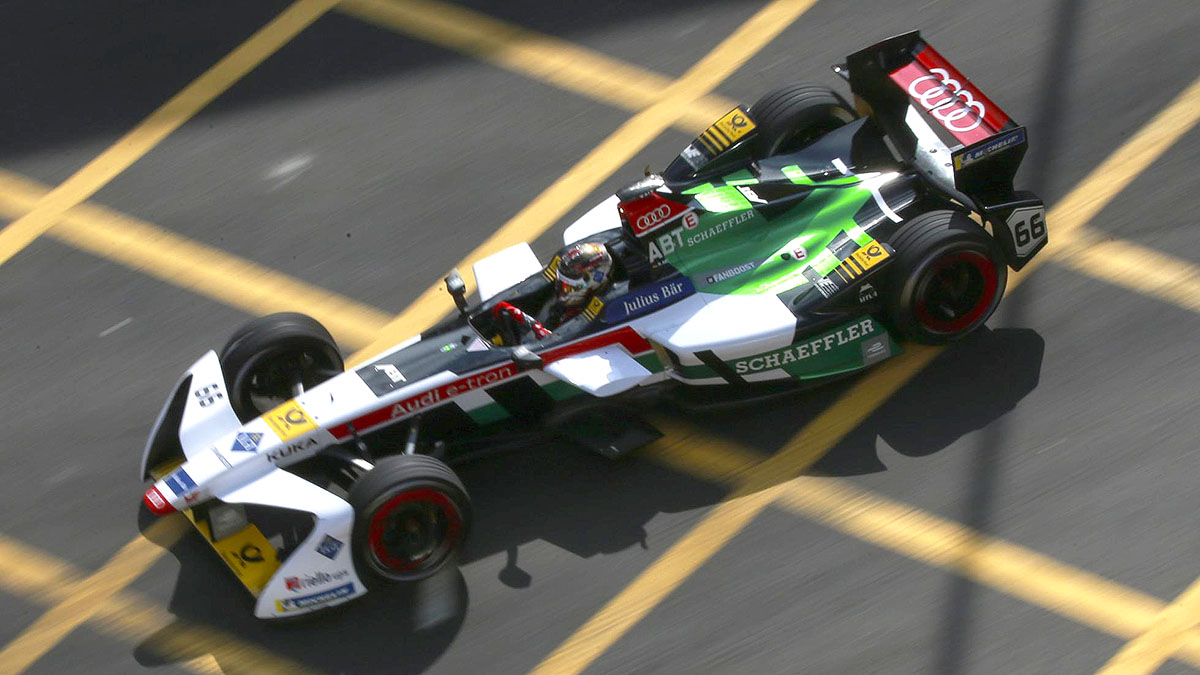
“Formula E is by far, not the fastest car I’ve ever driven,” explains reigning Formula E champion and Audi Sport driver Lucas Di Grassi. “Nor is it the most powerful. Nor does it have the most downforce. Or grip.”
A pause. “But… it’s one of the most difficult to control.”
The 2017/2018 Formula E season kicked off last weekend in Hong Kong, and we downloaded Di Grassi’s vast knowledge bank to discover just what it feels like to pilot a 240bhp (in race trim), lightweight electric go-kart.
Turns out, it’s actually a lot harder than the speed might suggest…
“First, the format of the championship [makes it difficult],” he tells us. “It’s only run on street tracks, so you run between concrete walls. If you have a mistake and touch the wall, that’s your weekend over. It’s like racing in Monaco, but all the time.

“Then you have very little time in the car. You only get one hour for practice, one lap for qualifying [where the cars are turned up to 270-odd bhp), and you have to adapt quickly,” he adds. Take, for example, a perfectly manicured, dedicated race circuit. “It’s smooth, the kerbs are in the right place and the corners are perfectly calculated,” Di Grassi says.
“Hong Kong city centre is not like that,” he adds with a laugh.
Then there’s the difficulty of running two power setups for qualifying and the race itself. “Qualifying you go as fast as you can, but in the race you go as fast as you can, with a limited amount of energy. Which has to be controlled by you. You have to follow specific energy consumption, via a target on the steering wheel.
“Which means you also have to adapt your braking point.” This raises another interesting aspect. “When you’re driving a car where you have to lift and save energy, you arrive at the corner at a different speed, so your braking point differs.
“In an electric car the motor is on the back, and when you brake it regenerates energy. But it doesn’t do it with a full battery. So at the beginning of a race the rear brakes are hot, and as soon as regeneration starts they cool down, so they don’t have the same friction anymore. You’re changing the braking point, but also the friction capacity,” he adds.

Di Grassi’s team mate for the year – Daniel Abt, cruelly denied a win on his birthday – concurs with just how tricky, and snappy, the things are. “There’s no focus on downforce,” he says, grinning, “so the car’s actually quite tricky to drive. The grip level is not super high, we have no slick tyres, no downforce, and a bumpy, dirty track.
“You’re always on the edge with the car.”
Not only that, but because the cars are closely aligned up and down the grid – the batteries and chassis are all spec, used by every team – the racing is tight. “In Formula E you just never know,” Di Grassi explains.
“You can have the best car but the difference between the cars is not so big. It’s not like F1. For example, Fernando Alonso is a great driver, but he has a McLaren, so it doesn’t matter what he does, he’s not going to win the title.
“FE is not necessarily like that. Take Techeetah for example: last year they were competitive. They could have won the championship… as a customer team. It’s almost the same as saying Toro Rosso could win the championship.
“So really,” he concludes, “it depends on the team, on the quality, on the driver, on the mistakes, on the consistency… I really have to keep my motivation high.”
So. There you go. While the championship is still in its relative infancy, the cars are tricksy little so-and-sos to drive…
